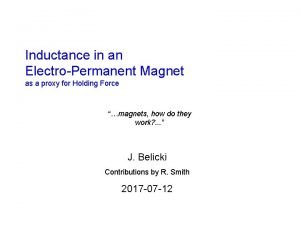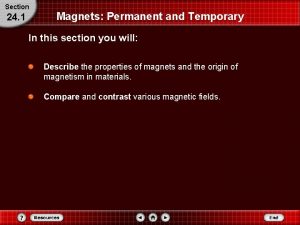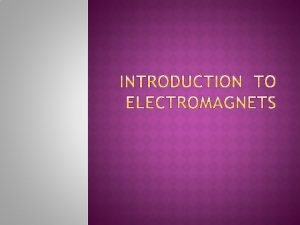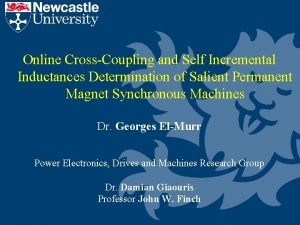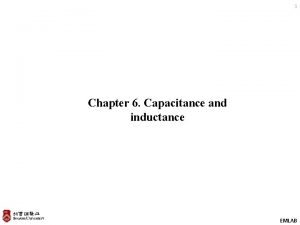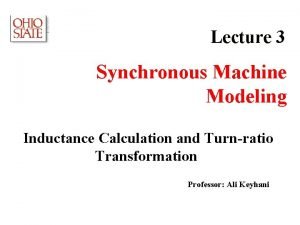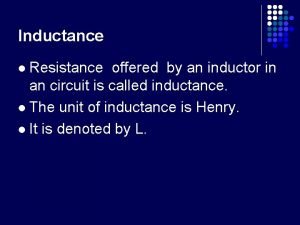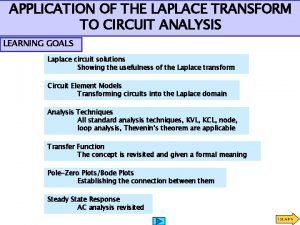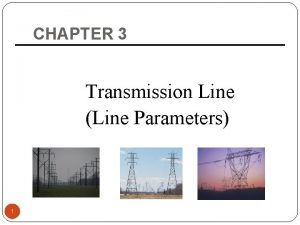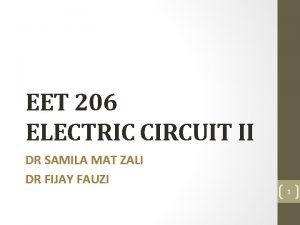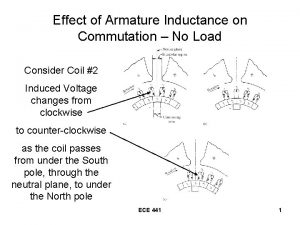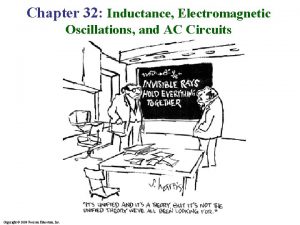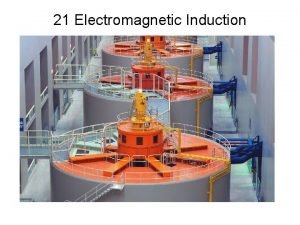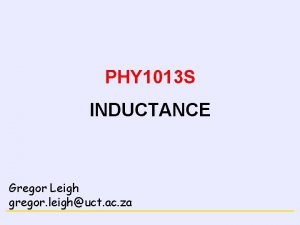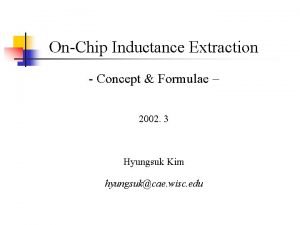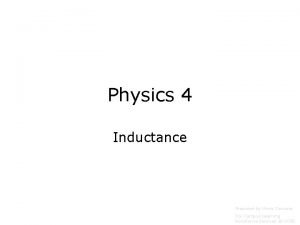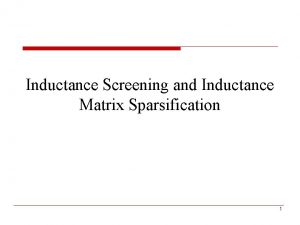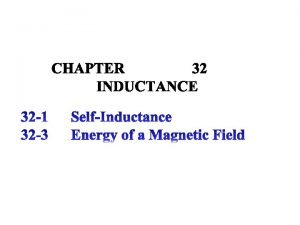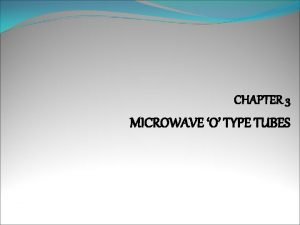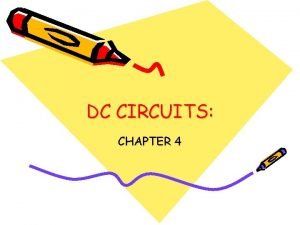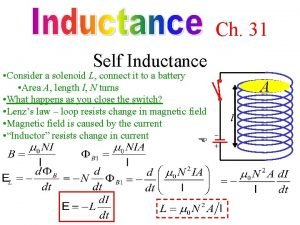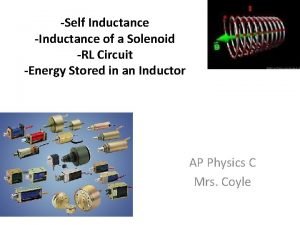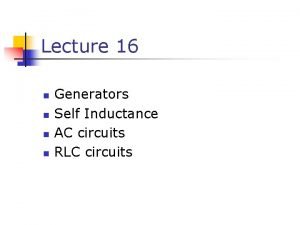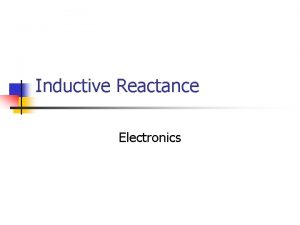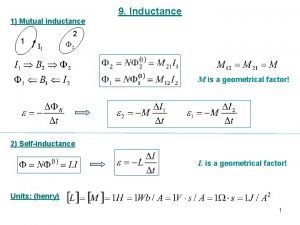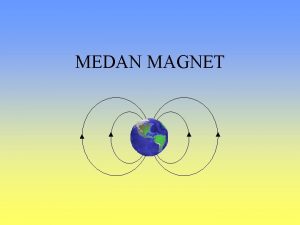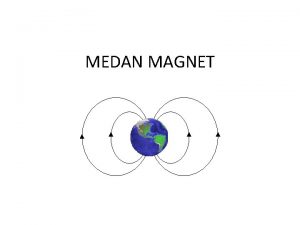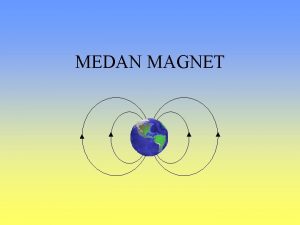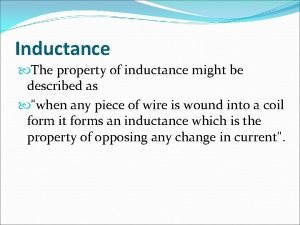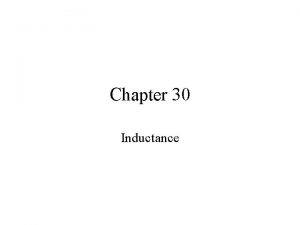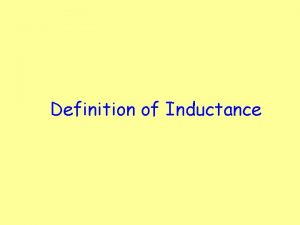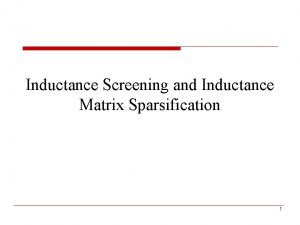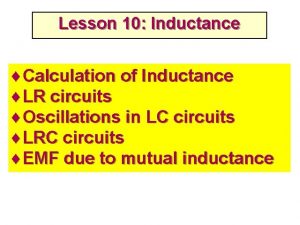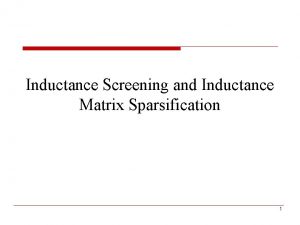Inductance in an ElectroPermanent Magnet as a proxy



























- Slides: 27

Inductance in an Electro-Permanent Magnet as a proxy for Holding Force “…magnets, how do they work? . . . ” J. Belicki Contributions by R. Smith 2017 -07 -12

2 Zwicky Transient Facility’s (ZTF) Need • Instrument in beam path, so beam obstruction must be kept to a minimum • Limited space within/around instrument Limited number of power and signal wires • Required: Low profile mechanism to retain filters for ZTF, high reliability, ability to detect distance/engagement of filter • Solution? J. Belicki, Caltech Optical Observatories 2017 -07 -12

3 Electro-Permanent Magnets! 25 mm 498 mm 457 mm Three magnets obstruct < 0. 2% of beam J. Belicki, Caltech Optical Observatories 2017 -07 -12

What is an Electro-Permanent Magnet (EPM)? 4 • An EPM is a permanently magnetized metal that has a coil of wire around its core • When power is supplied (24 V for our magnets), a current flows through the coils and creates a magnetic field of equal (but opposite) magnitude, canceling out the magnetic field • Two wires used to supply power to EPM – Same two wires can be used to measure plate distance and engagement! J. Belicki, Caltech Optical Observatories 2017 -07 -12

5 Force vs Current V = I/R Data from J. Zimmer J. Belicki, Caltech Optical Observatories Resistance is constant Direct relationship between voltage and current at low frequencies 2017 -07 -12

Force vs Distance 6 Force rolls off steeply with air-gap pickup of metal particles could compromise holding force. sensing of that air- gap is essential for reliability J. Belicki, Caltech Optical Observatories 2017 -07 -12

B-H curves for electromagnet 7 Soft iron core with low hysteresis B (tesla) Mild steel target plate works approximately like this Low residual magnetization with zero applied current H (ampere turns) Low L J. Belicki, Caltech Optical Observatories 2017 -07 -12

Permanent magnets = high hysteresis 8 B (tesla) 2) Stays magnetized when current removed (dipoles stay aligned) 1) Magnetize by applying high current to coil to flip all dipoles to same orientation H (ampere turns) B field saturates at lower value than for soft iron permanent magnet is not as strong at electromagnet J. Belicki, Caltech Optical Observatories 2017 -07 -12

Inductance Sensing Circuit 9 24 V pulse On to de-energize EPM, Off when sensing. J. Belicki, Caltech Optical Observatories 2017 -07 -12

10 L-R Circuit rise time VL=L*di/dt Vi Initially i=0, V 0=0, so V 0 =i. R A VL = A = L*di/dt = A/L d. V 0/dt = A*R/L Vi = VL + V 0 = L*di/dt + i. R V 0 = A * [1 – exp(-R*t/L) ] J. Belicki, Caltech Optical Observatories 2017 -07 -12

11 L-R Circuit rise time VL=L*di/dt Vi V 0 =i. R A Vi = VL + V 0 = L*di/dt + i. R Inductance increases when target plate bridges air gap across permanent magnet. V 0 = A * [1 – exp(-R*t/L) ] Magnetic field indication paper showing magnetic field lines from EPM J. Belicki, Caltech Optical Observatories 2017 -07 -12

12 Measure initial rise with short pulse VL=L*di/dt Vi V 0 =i. R Input pulse, 24 V Pulse for only 1 ms, to allows signal to rise to about 10% of full value and thus only slightly offset holding force. … but enough to pull core out of saturation (more on this later) EPM Response J. Belicki, Caltech Optical Observatories 2017 -07 -12

13 EPM is non-Linear Inductor!! • How does hysteresis curve affect inductance? • First we need to know how does one derive inductance from “first principals. ” • In fact let’s go back to the beginning of creation. “Let there be light”…. J. Belicki, Caltech Optical Observatories 2017 -07 -12

Let there be light! 14 Maxwell’s equations J. Belicki, Caltech Optical Observatories 2017 -07 -12

15 Faraday’s Law Voltage around loop V = = rate of change of flux through - dΦ/dt Inductance, L is defined by the relation: v Thus L = L * d i/dt = Sign convention for V reversed! dΦ/di If flux is non linear function of current, so is inductance J. Belicki, Caltech Optical Observatories 2017 -07 -12

B-H curves for electromagnet 16 Soft iron core with low hysteresis B (tesla) Low L Slope, L=dΦ/di, is high at low current Low residual magnetization with zero applied current Air cored solenoid Low L H (ampere turns) Low L J. Belicki, Caltech Optical Observatories When core fully saturates, slope is same as for air core. 2017 -07 -12

17 B-H curve for permanent magnet high hysteresis B (tesla) Low L High residual magnetization with zero applied current High L Avoid excess current since negative net field (B) will begin to demagnetize Slope, dΦ/di=L, is low when applied current is low. Opposite of electromagnet with low hysteresis core. H (ampere turns) Apply this current to offset permanent field of core. Red curve is retraced when current is removed so magnetization remains. B field saturates at lower value than for soft iron permanent magnet is not as strong at electromagnet J. Belicki, Caltech Optical Observatories 2017 -07 -12

When air gap is bridged 18 Hypothesis to explain data B (tesla) Plate in place Narrow air gap Both core and plate saturated. . . we never go here. No plate present Very little slope change at low current Inductance increases monotonically with air gap at large excitation current H (ampere turns) J. Belicki, Caltech Optical Observatories 2017 -07 -12

Ambiguity! J. Belicki, Caltech Optical Observatories 19 2017 -07 -12

20 Non-monotonicity hypothesis Linear segment approximation Plate saturates B (tesla) Plate attached Med. slope Plate air gap lope Core saturates s High No Plate Low slope H (amp-turn) J. Belicki, Caltech Optical Observatories 2017 -07 -12

21 More current helps, but still not monotonic Plate saturates B (tesla) Plate attached Med. slope Plate air gap ope Core saturates sl High No Plate Low slope H (amp-turn) J. Belicki, Caltech Optical Observatories 2017 -07 -12

22 Subtract initial reading monotonic Plate saturates B (tesla) Plate attached Plate air gap e lop s h Hig Core saturates lope s. ed No Plate M Low slope H (amp-turn) J. Belicki, Caltech Optical Observatories 2017 -07 -12

Multiple Pulse Times J. Belicki, Caltech Optical Observatories 23 2017 -07 -12

Breaking Ambiguity! J. Belicki, Caltech Optical Observatories 24 2017 -07 -12

Variations Between EPMs J. Belicki, Caltech Optical Observatories 25 2017 -07 -12

Variations Between EPMs: signal @1 ms – signal @ 0. 5 ms with scaling) J. Belicki, Caltech Optical Observatories 26 2017 -07 -12

Calibrations In Progress 28 • Variation between EPMs • Temperature dependence • Better force versus distance force versus measured rise time. J. Belicki, Caltech Optical Observatories 2017 -07 -12
 Vl vi
Vl vi Temporary vs permanent magnets
Temporary vs permanent magnets Difference between permanent magnet and temporary magnet
Difference between permanent magnet and temporary magnet Magnet berasal dari kata
Magnet berasal dari kata Incremental inductance
Incremental inductance Inductance formula
Inductance formula Magnetizing inductance
Magnetizing inductance Inductance
Inductance Laplace transform circuits
Laplace transform circuits Gmr of 3 strand conductor
Gmr of 3 strand conductor Transformer dot convention
Transformer dot convention Polarity of interpoles in dc generator
Polarity of interpoles in dc generator Inductance units
Inductance units Examples of self inductance
Examples of self inductance Electromagnetic induction
Electromagnetic induction Inductance energy
Inductance energy Self inductance formula
Self inductance formula Rl circuit current
Rl circuit current Inverse of inductance
Inverse of inductance Inductance energy
Inductance energy Self inductance formula
Self inductance formula O type microwave tubes
O type microwave tubes Equivalent inductance
Equivalent inductance L
L Rl circuit factories
Rl circuit factories Unit of self inductance
Unit of self inductance Inductance
Inductance Inductance factor
Inductance factor
